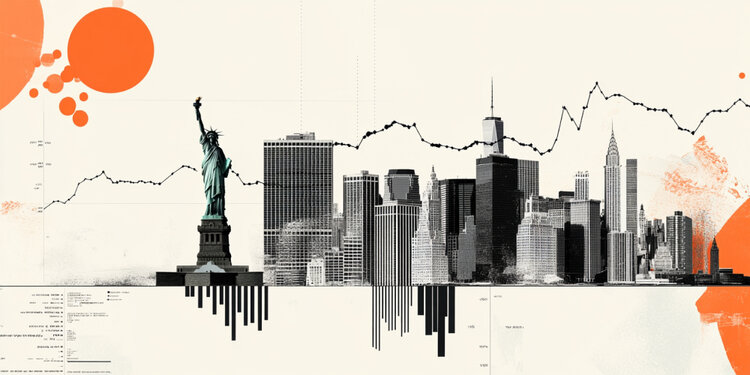- Dow Jones trades near 44,600 after FOMC Minutes reaffirm a cautious but steady policy stance.
- Fed officials debated slowing or pausing balance sheet reduction amid renewed debt ceiling concerns.
- Most participants saw risks to inflation and employment as balanced, though some flagged inflation risks as higher.
The Dow Jones Industrial Average, which measures the performance of 30 large-cap US stocks, steadied around 44,600 after the Federal Reserve’s January meeting minutes. The report confirmed that policymakers unanimously agreed to hold rates steady and debated whether to slow balance sheet reduction due to concerns over the debt ceiling. Markets remain cautious as trade and immigration policy uncertainties persist.
Daily digest market movers: Dow Jones steadies as Fed signals patience
- Fed officials discussed whether it would be wise to pause or slow balance sheet runoff amid debt ceiling concerns.
- The Federal Open Market Committee (FOMC) kept the target interest rate unchanged, with all participants supporting the decision.
- Some members warned that trade and immigration policy shifts could hinder progress on inflation.
- A couple of participants viewed inflation risks as outweighing employment risks, but most saw them as balanced.
- Many participants suggested future asset purchases should align the Fed’s portfolio with Treasury debt maturity composition.
- Elsewhere, US President Donald Trump’s 25% tariffs on cars, pharmaceuticals, and semiconductors add to economic uncertainty.
- Global investors remain wary as US-Russia peace talks on Ukraine stall, escalating geopolitical tensions.
Technical Analysis
The Dow Jones remains below the 20-day SMA at around 44,600, reinforcing bearish momentum. While markets found some stability post-FOMC Minutes, upside potential remains limited unless buyers push the index above key resistance levels. A sustained drop below 44,350 could trigger further declines, while recovery efforts hinge on securing 44,600.
Central banks FAQs
Central Banks have a key mandate which is making sure that there is price stability in a country or region. Economies are constantly facing inflation or deflation when prices for certain goods and services are fluctuating. Constant rising prices for the same goods means inflation, constant lowered prices for the same goods means deflation. It is the task of the central bank to keep the demand in line by tweaking its policy rate. For the biggest central banks like the US Federal Reserve (Fed), the European Central Bank (ECB) or the Bank of England (BoE), the mandate is to keep inflation close to 2%.
A central bank has one important tool at its disposal to get inflation higher or lower, and that is by tweaking its benchmark policy rate, commonly known as interest rate. On pre-communicated moments, the central bank will issue a statement with its policy rate and provide additional reasoning on why it is either remaining or changing (cutting or hiking) it. Local banks will adjust their savings and lending rates accordingly, which in turn will make it either harder or easier for people to earn on their savings or for companies to take out loans and make investments in their businesses. When the central bank hikes interest rates substantially, this is called monetary tightening. When it is cutting its benchmark rate, it is called monetary easing.
A central bank is often politically independent. Members of the central bank policy board are passing through a series of panels and hearings before being appointed to a policy board seat. Each member in that board often has a certain conviction on how the central bank should control inflation and the subsequent monetary policy. Members that want a very loose monetary policy, with low rates and cheap lending, to boost the economy substantially while being content to see inflation slightly above 2%, are called ‘doves’. Members that rather want to see higher rates to reward savings and want to keep a lit on inflation at all time are called ‘hawks’ and will not rest until inflation is at or just below 2%.
Normally, there is a chairman or president who leads each meeting, needs to create a consensus between the hawks or doves and has his or her final say when it would come down to a vote split to avoid a 50-50 tie on whether the current policy should be adjusted. The chairman will deliver speeches which often can be followed live, where the current monetary stance and outlook is being communicated. A central bank will try to push forward its monetary policy without triggering violent swings in rates, equities, or its currency. All members of the central bank will channel their stance toward the markets in advance of a policy meeting event. A few days before a policy meeting takes place until the new policy has been communicated, members are forbidden to talk publicly. This is called the blackout period.
Read the full article here

